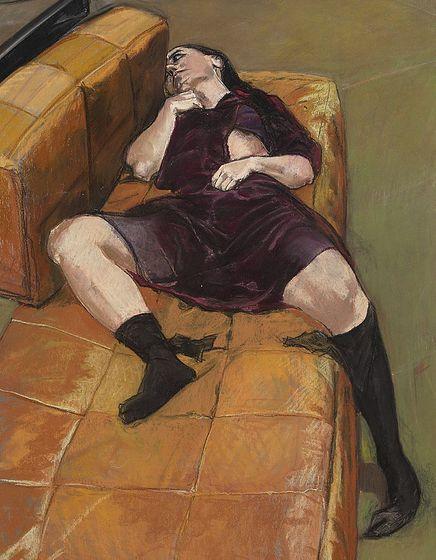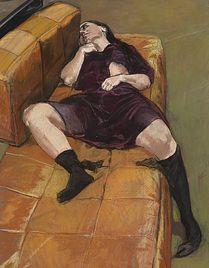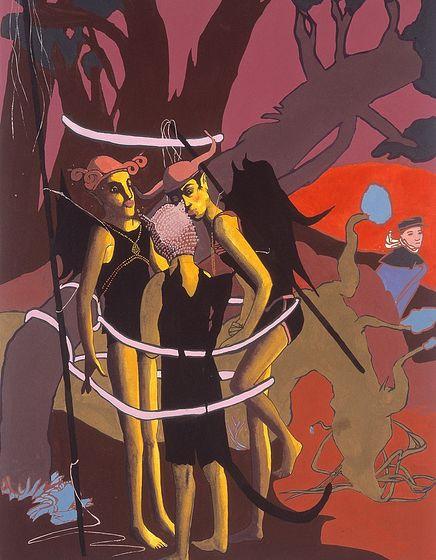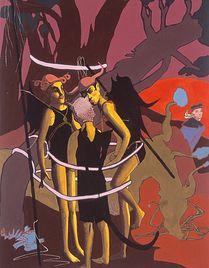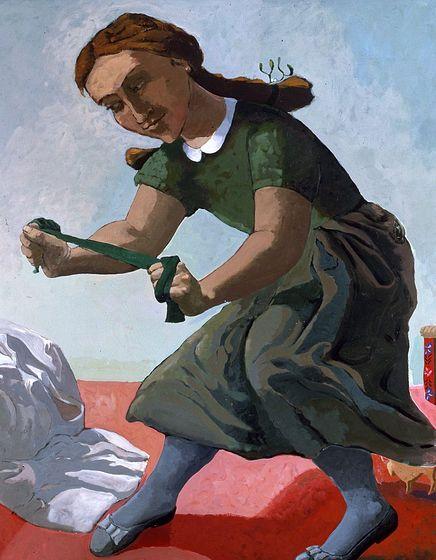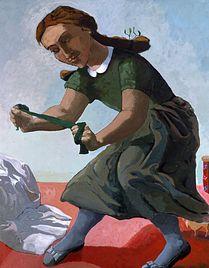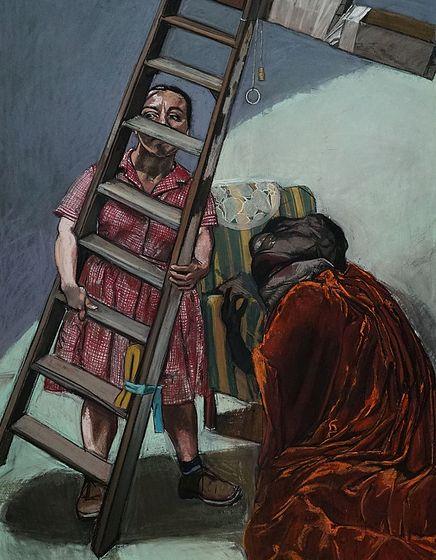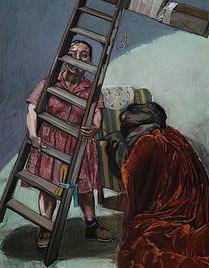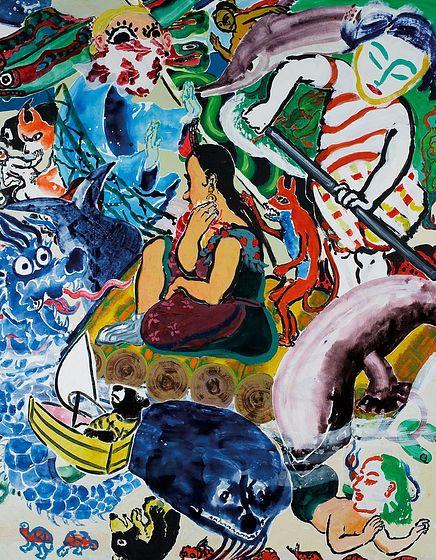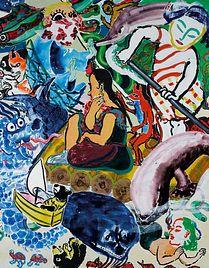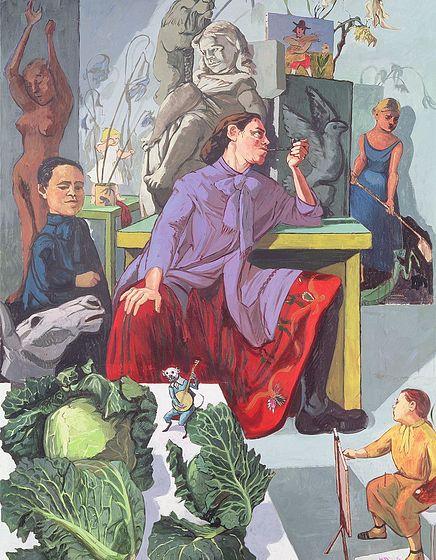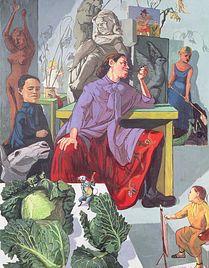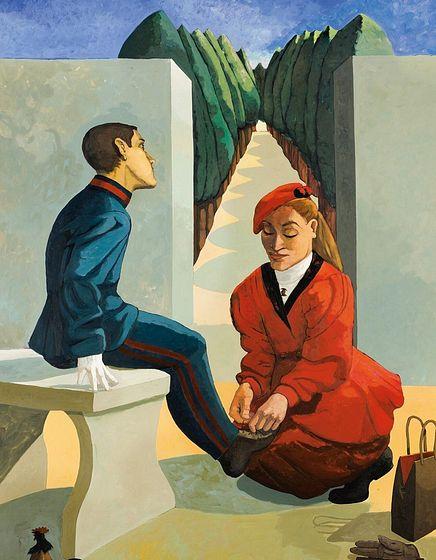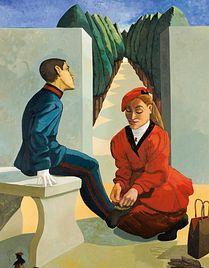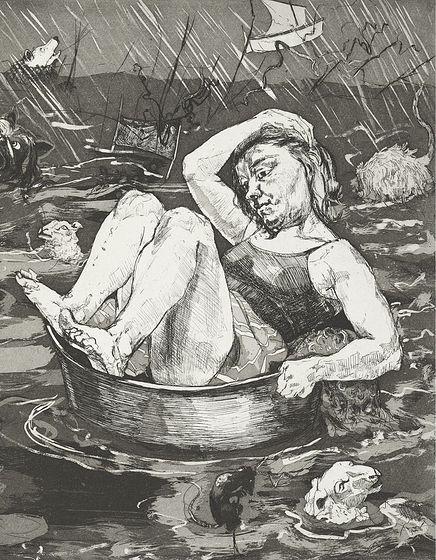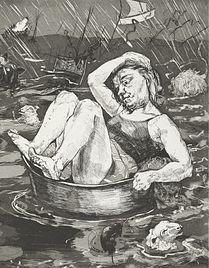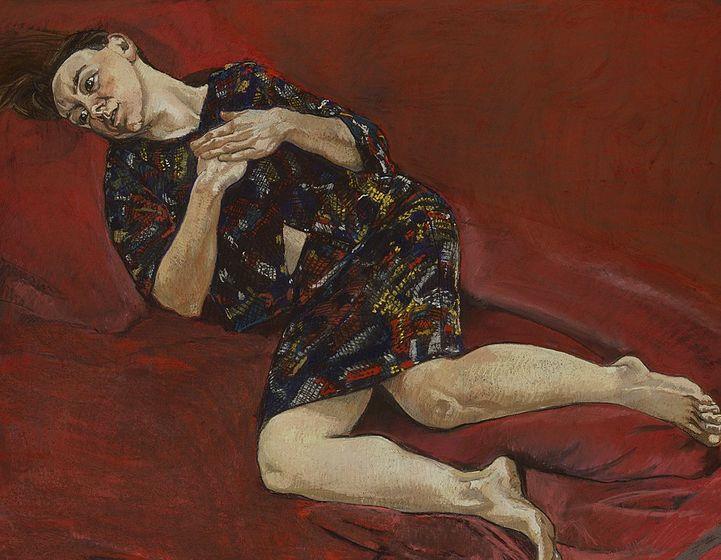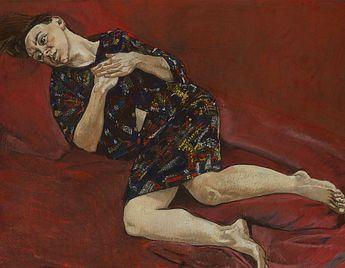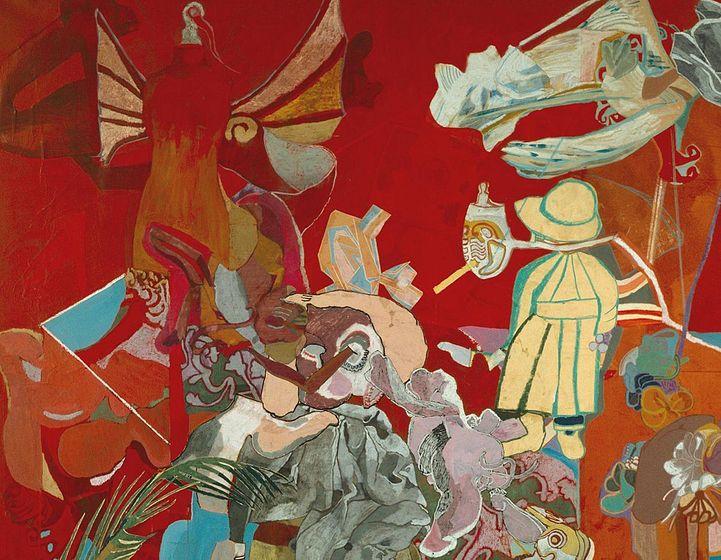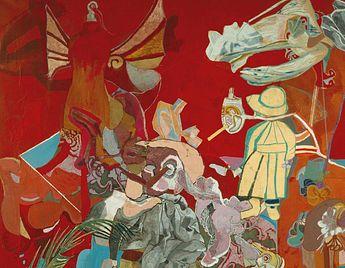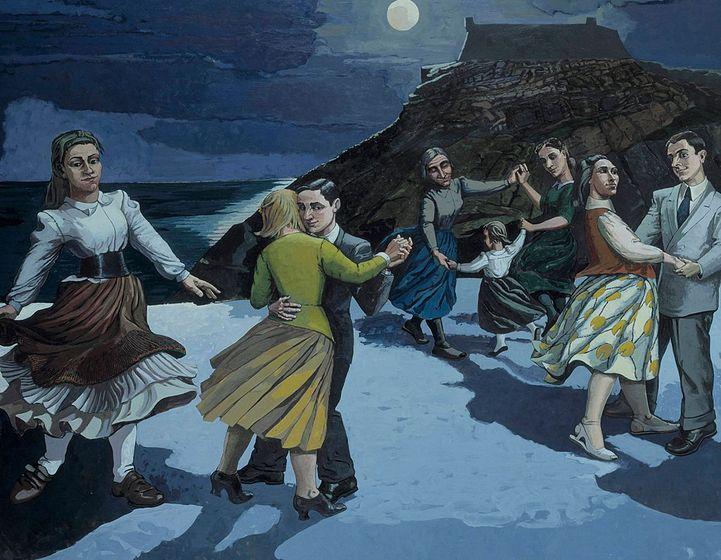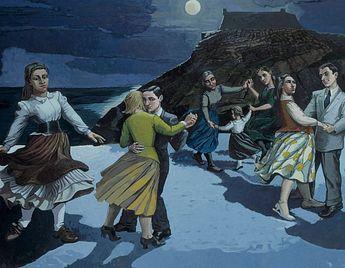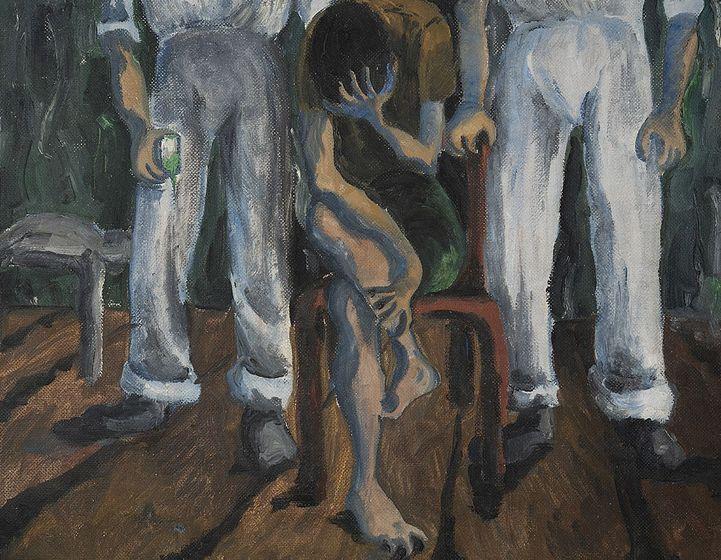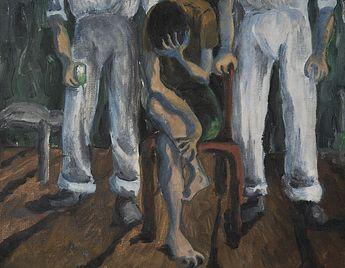“She represents a woman being tortured by two men,” explains Elena Crippa. “From a very early age, Paula had extraordinary imagination and empathy. Whenever she heard about injustice or abuse, she responded through her work.”
Interrogation set the tone for the rest of her career. Rego, who studied at The Slade School of Fine Art has always made her women heroes. They are survivors and they are strong – even in the face of horror, pain, and cruelty.
She gives them, if not always control, a certain dignity. For all of her fears, Rego isn’t afraid of splayed leg ungainliness or displays of agony or loss of composure. She deals with the stark reality of womanhood in scenes of dreamlike ambiguity accented by figures from a fairy tale or nursery rhyme: she did an entire series of etchings on the latter – dedicated to the dark sides of Little Miss Muffet, Mother Goose et al.
Rego’s inner child is ever-present, it is there in every little girl she paints, in the toys that litter the backdrops of her subjects – and in her north London studio. Along with high ceilings, a generous skylight, and trolleys of pastels, are heaps of dolls and stuffed animals. Her complex, adult ideas are often carried by these benign or innocent vehicles.
“There is certainly allegory – she uses animals as metaphors,” says Crippa. “This helps her speak of difficult things.”

